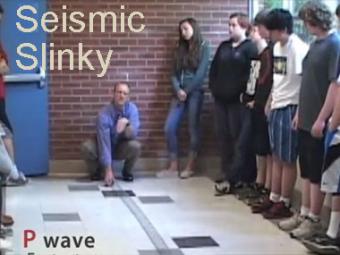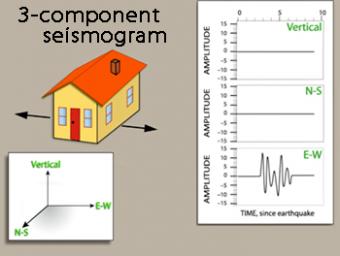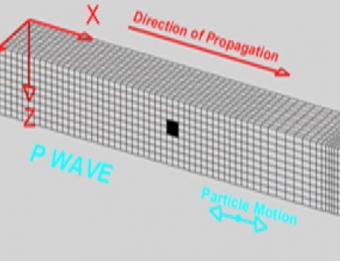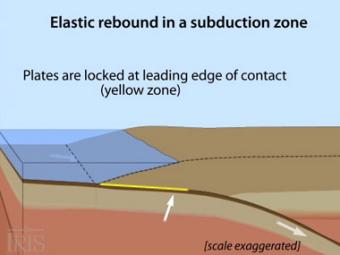Novice
How do seismic waves interact and move through the Earth?
In this activity, learners will model seismic waves using a Slinky© to experience how seismic waves interact and move through the Earth.
Three different options provide opportunities to understand the characteristics of different types of seismic waves. In the 5-minute activity, learners observe an animation about fast traveling P waves and the slower-traveling S waves then discuss the basics of the ShakeAlert Earthquake Early Warning system. The 15-minute activity provides hands-on experiences of how P and S waves travel using a Slinky©. The 45-minute activity provides learners an opportunity to explore additional seismic wave concepts and how they relate to real-world situations.
Learners will be able to:

A video demonstration of how a slinky can be a good model for illustrating P & S seismic waves movement.

We use exaggerated motion of a building (seismic station) to show how the ground moves during an earthquake, and why it is important to measure seismic waves using 3 components: vertical, N-S, and E-W. Before showing an actual distant earthquake, we break down the three axes of movement to clarify the 3 seismograms.

An earthquake or explosion can generate seismic waves. These elastic waves may travel either through the earth’s interior as "body waves" (P and S waves) or along or near the earth’s surface as "surface waves" (Rayleigh and Love waves). This set of four animations shows the behavior of each using a 3-D grid.

Oblique view of a highly generalized animation of a subduction zone where an oceanic plate is subducting beneath a continental plate. (See sketch below for parts.) This scenario can happen repeatedly on a 100-500 year cycle. The process which produces a mega-thrust earthquake would generate a tsunami, not depicted here.
We encourage the reuse and dissemination of the material on this site as long as attribution is retained. To this end the material on this site, unless otherwise noted, is offered under Creative Commons Attribution (CC BY 4.0) license